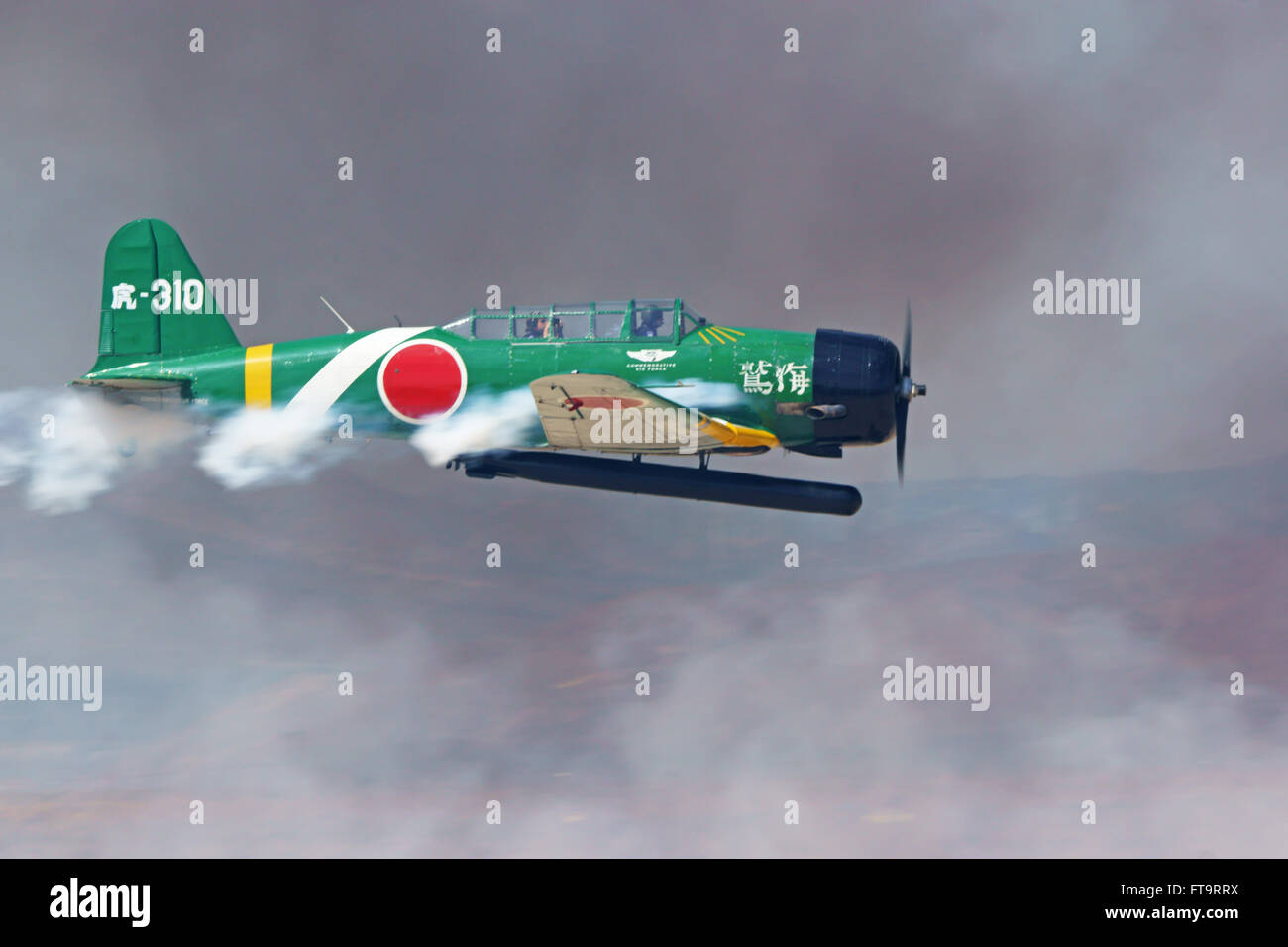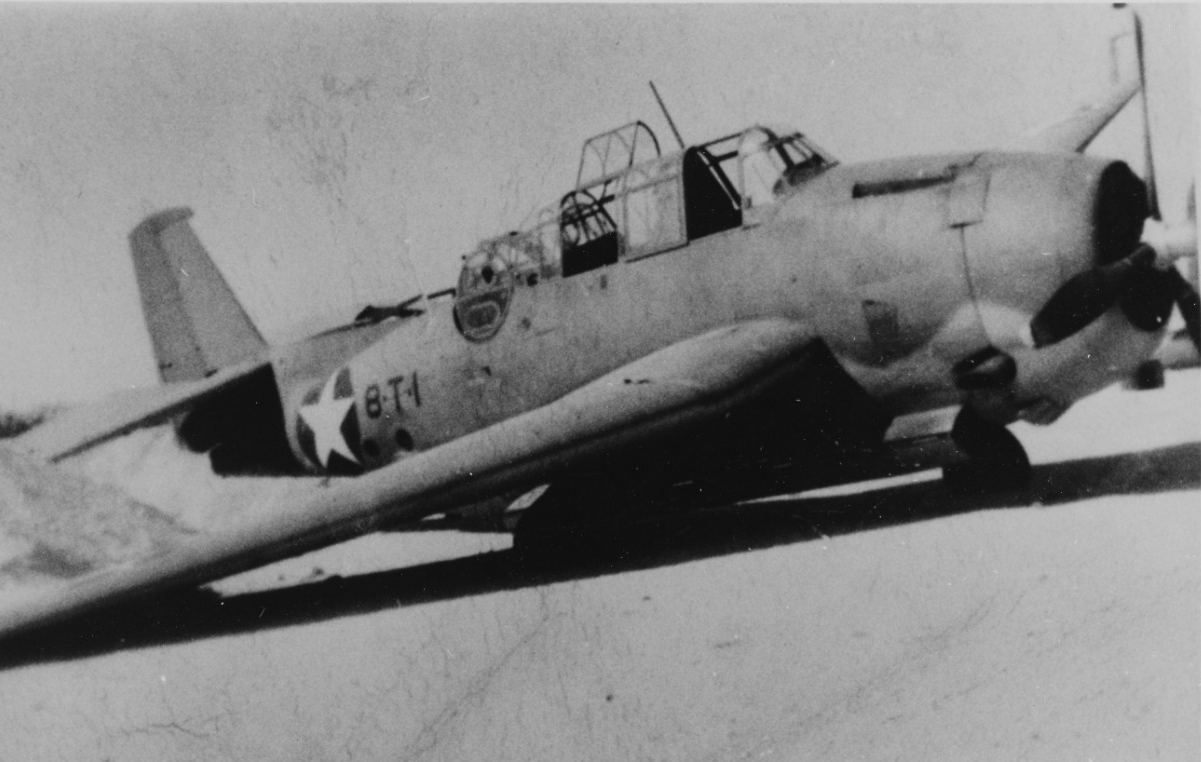Japanese Torpedo Bomber - Nakajima Type 97 B5N1 Keith takes off from Akagi in the Malaya Harbor film. This scene was often used to show the launching of torpedo planes to attack Berry Harbor. However, as an older example of B5N1, it may have more tape than the previous one. (Maritime History and Heritage Empire)
A B5N pilot nicknamed "Kate" by his teammates was a major highlight. Even his debut against China in 1938 showed that armored machinery was necessary to preserve his fuel and his crew of three. Too heavy, the Imperial Navy declared, instead installing a larger machine on Nakajima, hoping to outrun the pursuing pilots. An update to the Moro B5N was Japan's first torpedo bomber of the war. On December 7, 1941, a group of 143 Keith departed from Hawaii to attack Peach Harbor; Keith from the Hiryu sunk battleship USS
Japanese Torpedo Bomber

To cut down After a month 81 of 93 Kates lay down in the middle, but the long ships of the enemy were severely damaged; In October, at the Battle of the Santa Cruz Islands, Cates helped sink the carrier USS
Bane Of The Battleship: Dive & Torpedo Bombers
. By the end of the war, the superior design and aircraft production of the Allies, as well as the heavy destruction of Japanese aircraft and aircraft, relegated the B5N to the primary role of trainer and target acquisition. Cats also run submarine and kamikaze warfare. The Nakajima B5N (Japanese: 中島 B5N, Allied designation "Kate") was the flagship torpedo bomber of the Imperial Japanese Navy (IJN) for much of World War II.
Although the B5N was significantly faster and more capable than its allies, the American Douglas TBD Devastator monoplane (the first all-metal retractable gear of any type of US Navy monoplane) and the British Fairey Swordfish and Fairey Albacore torpedoes. Biplanes became obsolete in 1941. However, the B5N remained operational throughout the war due to the delayed development of its successor, the B6N.
Early in the Pacific War, flying well-organized IJN aircrews and with well-organized attack units, the B5N achieved remarkable success in the battles of Margarita Harbor, the Coral Sea, the Middle, and Santa Cruz Islands.
The B5N, developed by the team of Katsuji Nakamura in 1935, meets the Navy's specification for a torpedo bomber to replace the Yokosuka B4Y. Called the Type K internally by Nakajima, it successfully competed with the Mitsubishi B5M for the production contract. The first prototype flew in January 1937 and soon went into production under the full name Carrier Attack Bomber 97.
Nakajima B5n Kate
Combat experience during the Second Sino-Japanese War revealed many of the weaknesses of the original B5N1 production model. This is mainly due to the lack of protection offered to crew and fuel tanks. In order to maintain the superior performance of the ke type, the Navy did not want to add weight in the form of armor and instead sought a faster version of the aircraft in hopes of speeding up the fighters. The B5N2 uses a much more powerful engine - Nakajima's own model Sakae 11, a 14-cylinder radial twin used in early models of the Mitsubishi A6M fighter - and various modifications have been made to streamline it. Although its performance was slightly better and its weaknesses were not strengthened, this version replaced the B5N1 in production and service from 1939.
A view of the Nakajima B5N2 "Kate" Type 88 bomb, torpedo release lever and manual bomb at the Pearl Harbor Aviation Museum
The navigator/bombardier/observer position was equipped with the Type 90 bomber, which was a long vertical tube located forward of the left seat. There was also a type of 3-pound precision navigational compass that mounted on top of the cockpit frame. The radio operator/gunner's position is equipped with one of the standard radio receivers for three-seat naval aircraft (earlier Type 96 Mk3 and later Type 2 Mk3), mounted in front and behind the radio/gunner's seat. navigator/bombardier/observer seat

The radio operator/taster also mounted one flexible 7.7 mm (.303 in) Type 92 machine gun on the opposite side of the cockpit. A single type 91 torpedo can be mounted on the electrically connected guns on the starboard side under the fuselage. Alternatively, the guns may contain one 800 kg bomb (for example, the 99 No. 80 cluster bomb) or two 250 kg bombs (for example, the 98 No. 98), and two 60 kg bombs (for example, the 2 Type No. 6 land bomb. ) Changing the guns and torpedoes and bombs was a light process and could take more than two hours to complete.
Print Scale Decals 1/72 Nakajima B5n Kate Japanese Wwii Torpedo Bomber Military Models & Kits Toys & Hobbies Marinacape.bg
Initially, most B5N bombers were painted silver, the color used during the early stages of the Second Sino-Japanese War. The color gradually changed to gray before the start of the Pacific War.
The B5N was used primarily as a carrier aircraft and occasionally as a grounded bomber. It had a crew of three: a pilot, a navigator/bombardier/observer and a radio operator/swimmer.
As with other IJN multi-seat aircraft, the private bomber was flown by an ordinary crew member on board who could be an observer rather than a pilot.
The first B5N1 model saw action in the Second Sino-Japanese War of 1938. The upgraded B5N2 played a major role in the attack on Berry Harbor. One of the B5N2s of the iron attack commander Mitsuo Fuchida and one of the high-class bombers from the Hiryu, which is believed to have sunk in the Battle of Arizona. B5N2 torpedo bombers also sank the battleships West Virginia, California, Oklahoma and Utah. Five torpedo planes were fired in the first wave. Apart from this raid, the B5N2's greatest successes were the major missions it did in the sinking of the United States Navy aircraft carrier Lexington in the Battle of the Coral Sea and the Santa Cruz Islands, and in the sinking of the York City. At the Battle of the Mediterranean, later a 1-class submarine sunk, 168
Japanese Aircraft Of World War Ii (technical Guides): 1937–1945: Amazon.co.uk: Thomas Newdick: 9781782744740: Books
B5N2 torpedo bombers, usually with Aichi D3A dive bombers, made a coordinated attack on the carriers. Ideally, dive bombers will help to suppress anti-aircraft fire, to improve the chances of success for slow-flying torpedo bombers.
In the Battle of the Eastern Solomons, the IJN tried to minimize the losses of torpedo bombers for the first time on American ships by simply disabling them, as torpedo bombers were not launched until the end of the war. he stopped.
The B5N was based on the next design, the B6N, which it later replaced in frontline service. The B5N continued to fly in secondary roles such as training, target towing and anti-submarine warfare. Some aircraft are equipped with old radars and magnetic anomaly detectors used for this purpose. B5Ns were also used as bombers in the defense of the Philippines in October 1944, suffering heavy losses. Later in the war they were used for kamikaze attacks.

The Nakajima B5N2 "Kate" was restored at the Pearl Harbor Aviation Museum in 2019. The original Hinomaru is still visible under the right wing.
Curiosity And High Tech Sonar Uncover Lost Wwii Torpedo Bomber
None of the 1,150 B5Ns produced during World War II survived. Only two partially restored B5Ns are known to exist, neither of which is airworthy.
B5N2 replicas were built using fuselages from the American Canadian automaker and on Harvard's foundation - an exchange of North American T-6 Texans that were modified to recreate the aircraft for the movie Tora! Tora! Tora!, and has been used to describe many movies and airshows. We and our partners store cookies and/or collect information on your device. We and our partners use the information for personal ads and content, ad and content measurement, audience information and product development. An example of data processing may be a unique identifier stored in a cookie. Some of our partners may process your information as part of their legitimate business interests without asking for your consent. To view the purposes for which they believe they have a legitimate interest or to object to the processing of this data, please use the seller's list of links below. The consent given is used only for the processing of data obtained from this site. If you wish to change your settings or withdraw your consent at any time, a link to do so is available on our privacy policy page.
While working on the CAF Dixie Wing last week, we took some photos of Alan Armstrong's Nakajima B-5N "Kate". When not flying his Torpedo Bomber, Alan owns an aviation law in Atlanta. His "Kate" is the star of the movie, but not many people know that this plane is actually a 1943 SNJ-4 that has been modified to resemble Nakajima's "Kate" bomber.
Keith built and flew a replica bomber in the 20th Century Fox movie, "Tora! Tora! Tora!"
Air Museum Network
Tbm torpedo bomber, tbm avenger torpedo bomber, swordfish torpedo bomber, japanese torpedo, grumman torpedo bomber, japanese kate torpedo bomber, tbd torpedo bomber, devastator torpedo bomber, torpedo bomber, tbf avenger torpedo bomber, avenger torpedo bomber, beaufort torpedo bomber
0 Comments